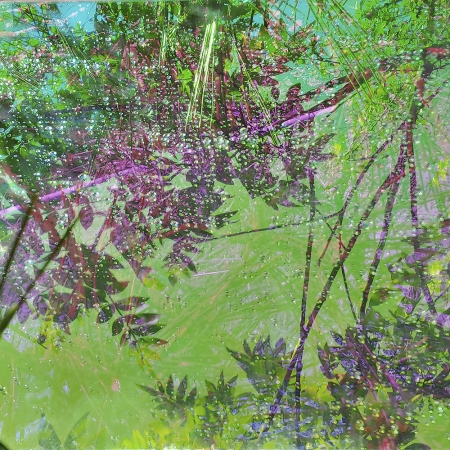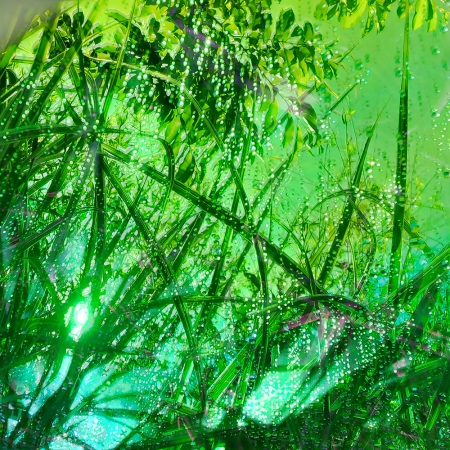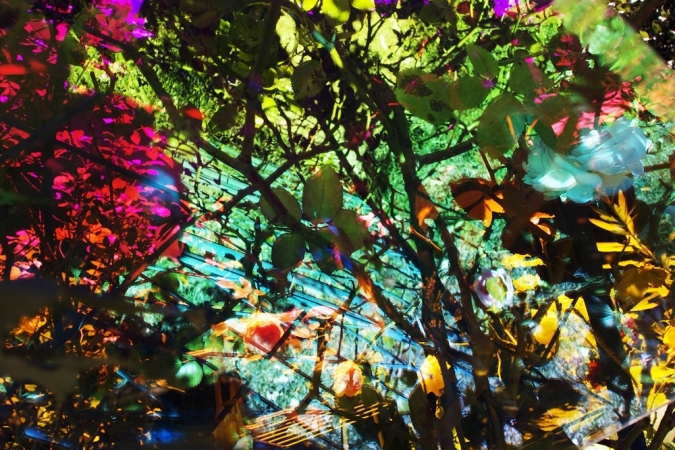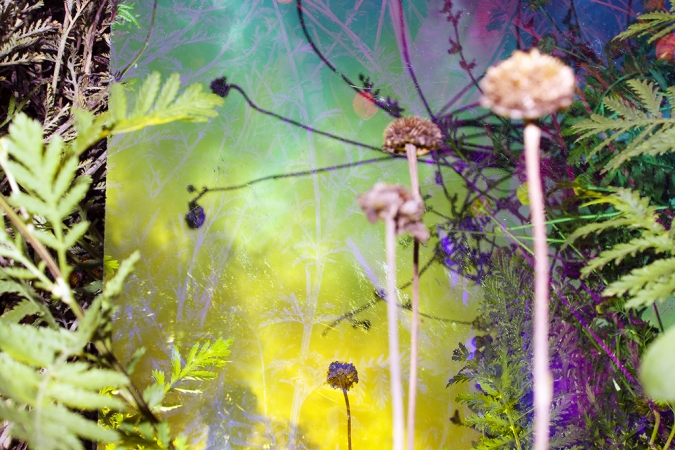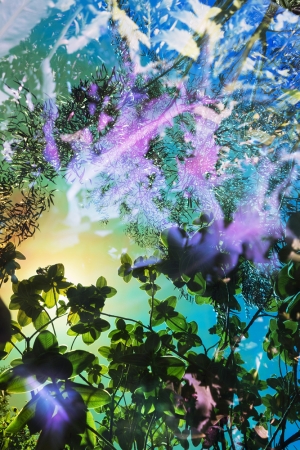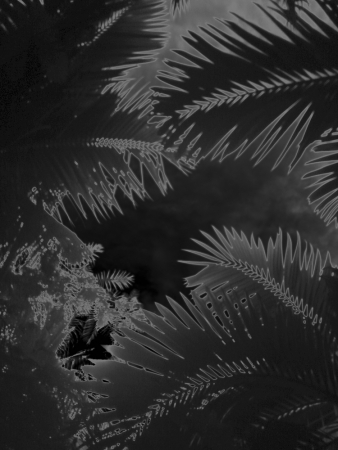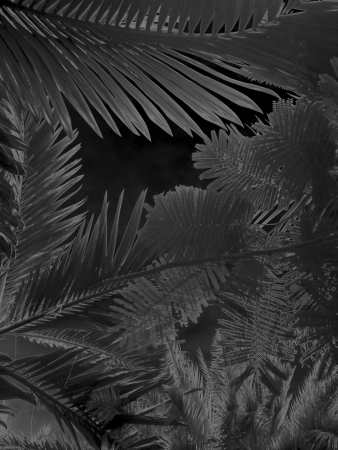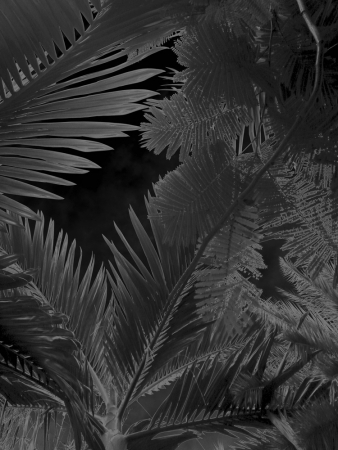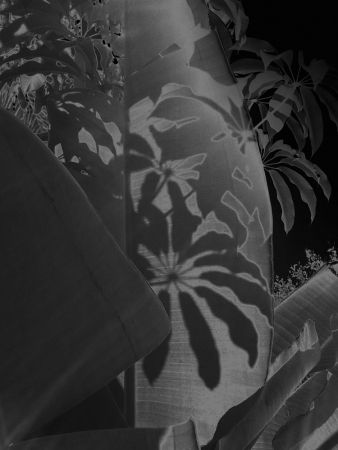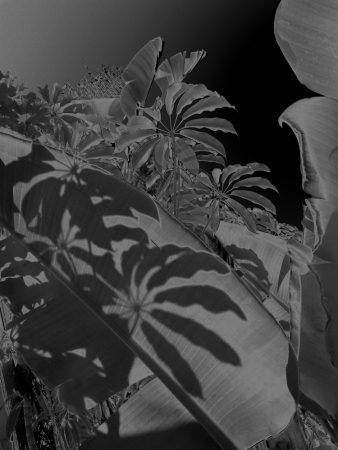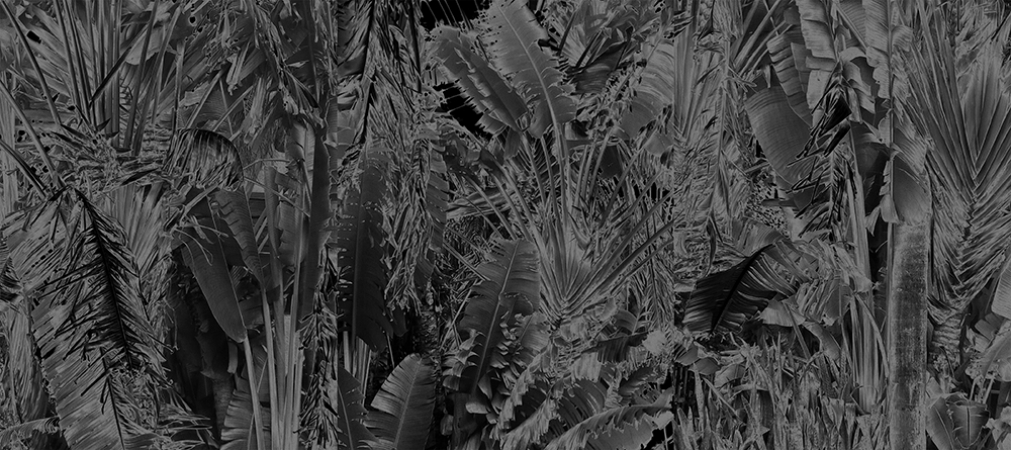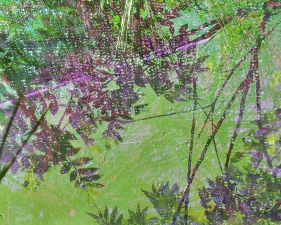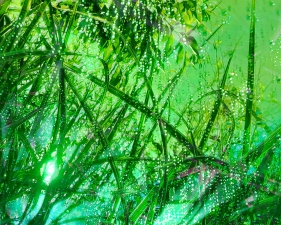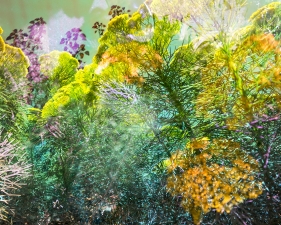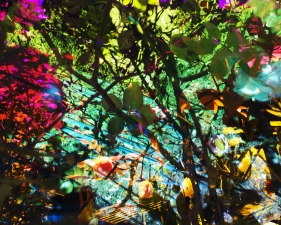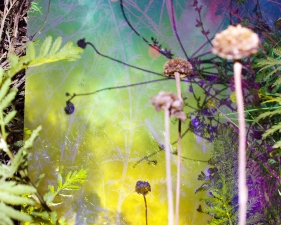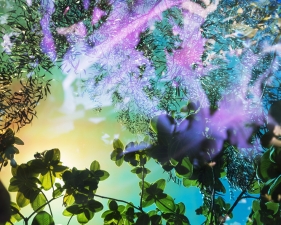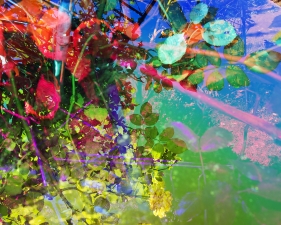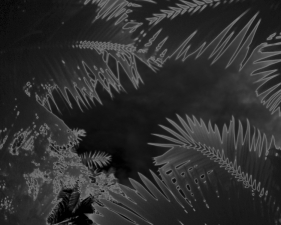ARTIFICIAL BY NATURE
Benrubi Gallery is pleased to present Artificial by Nature, the new exhibition by Karine Laval. Artificial by Nature continues the artist’s long exploration of distorted realities and altered perceptions, resulting in manipulations of light and color as sophisticated as they are seductive. Laval's fifth solo exhibition with the gallery will also debut her foray into scuplture.
The gallery’s main space features selections from Laval’s Heterotopia, a series of densely layered photographs of gardens and other manicured “natural” environments. Placing sheets of glass and mirrors in the composition, and employing skewed perspectives and extreme crops, the images in Heterotopia are suffused with the luminescence of stained-glass windows while possessing the uncanny charm of movie stills or extraterrestrial landscapes. Tiny stems appear tall as trees, while empty space fills up with clouds of color that swirl with the celestial movement of nebulas. Yet there are often traces of the unmanipulated scene left in the frame, reminding viewers that this is in fact a familiar world, and the only thing that’s changed is the way it’s perceived. Light, which we’re accustomed to think of as the medium we see through, is revealed for what it is: the medium that brings the images to our eyes, and that possesses layers far richer than what we normally see.
On view in the project room are selections from Black Palms, a series of images of Los Angeles palm trees, shot from below and solarized, leaving behind vast black fields jaggedly slashed with silver etchings. The zigzag tracings of the palm leaves recall photograms or the stylized manipulations of light in film noir (in which many of these trees once featured), while the inky gloss of the images simultaneously reflects viewers’ gaze and sucks them into an interstellar vastness. But as with the images in Heterotopia, the quotidian reality is discernible, leaving viewers with the uneasy yet uplifting suggestion that the world is what we think it is only because of long-held and often unconscious patterns of association. There is always more to see.
Karine Laval (b. 1971) was born in Meudon-La-Foret, France and lives in Brooklyn, NY. Her work has been widely exhibited in solo and group exhibitions in the United States and internationally at such venues as the Palm Springs Art Museum, the Los Angeles Center for Digital Art, the Sorlandet Art Museum in Kristiansand, Norway, the Palais de Tokyo in Paris, and at several photo festivals throughout Europe and the US. Laval was a finalist in France’s Villa Medicis Hors Les Murs as well as the recipient of the Peter S. Reed Foundation Grant.
Karine Laval was born in Meudon-la-Forêt in Paris in 1971 and educated at the Sorbonne and the University ASSAAS in Paris, and at Cooper Union and the New School in New York City, where she now lives and works.
Since the beginning of her career, Laval has alternated agency and magazine commissions and publications (Here is New York 2002) with an artistic practice, wherein she combines portraiture of personalities from the cultural world with images of geographical locations (France, Norway, Portugal, Cuba) and visual narratives.
Her photographs are notably spontaneous and reminiscent of the photographs of masters such as Henri Cartier-Bresson or William Eggleston, with whom she shares a similar use of color as an expressive tool. This is evident in The Pool, which focuses on the leisurely environment of swimming pools in summertime. Laval’s images transport viewers into naïve atmospheres that capture the feeling as well as the substance of everyday life in the twenty-first century. In Altered States, Laval continues to explore the vagaries of subjective perception and challenges the way we see by combining performance and the mechanics of photography itself. The artist directed a professional dancer to perform underwater in a swimming pool, testing the body’s resistance in an unfamiliar element and under challenging conditions. The resulting images oscillate between representation and abstraction and blur the boundary between photography and painting.
Laval’s work has been widely exhibited in solo and group exhibitions in the United States and internationally at such venues as the Palm Springs Art Museum, the Los Angeles Center for Digital Art, the Sorlandet Art Museum in Kristiansand, Norway, the Palais de Tokyo in Paris, and at several photo festivals throughout Europe and the US. Laval was a finalist in France’s Villa Medicis Hors Les Murs as well as the recipient of the Peter S. Reed Foundation Grant.




